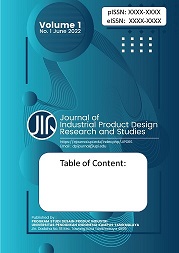Toolbox Redesign for Flight Engineer
Abstract
Keywords
Full Text:
PDFReferences
Ahmad, S. and Unang, A. (2015). Sistem informasi e-commerce pemasaran hasil pertanian Desa Kluwan berbasis web. Jurnal Ilmiah Ekonomi dan Bisnis, 8(1), 42–56.
Candra, A., and Japri, M. (2021). Pertanggungjawaban maskapai penerbangan terhadap kehilangan barang bawaan (bagasi) berdasarkan Undang-Undang nomor 1 tahun 2009 tentang penerbangan. Collegium Studiosum Journal, 4(2), 71-78.
Degner, M., Moser, S., and Lewalter, D. (2022). Digital media in institutional informal learning places: A systematic literature review. Computers and Education Open, 3, 1-11.
Harvey, S., Cushion, C. J., Wegis, H. M., and Massa-Gonzalez, A. N. (2010). Teaching games for understanding in American high-school soccer: A quantitative data analysis using the game performance assessment instrument. Physical Education and Sport Pedagogy, 15(1), 29-54.
Jatmiko, E., and Joestiono, K. T. (2020). Penerapan unsur-unsur nirmana dwimatra dalam toolbox perangkat lunak desain coreldraw. DeKaVe, 13(2), 38-53.
Koley, S. (2011). A study of anthropometric profile of Indian inter-university male cricketers. Journal of Human Sport and Exercise, 6(2), 427-435.
Lin, S., Döngül, E. S., Uygun, S. V., Öztürk, M. B., Huy, D. T. N., and Tuan, P. V. (2022). Exploring the relationship between abusive management, self-efficacy and organizational performance in the context of human–machine interaction technology and artificial intelligence with the effect of ergonomics. Sustainability, 14(4), 1-22.
Sihombing, M. (2021). Monopoly legal aspects of violations in determining flight transportation. Journal of Multidisciplinary Academic, 5(3), 296–300.
Wardani, L.K. (2003). Evaluasi ergonomi dalam perancangan desain. Dimensi Interior, 1(1), 61–73.
DOI: https://doi.org/10.17509/jipdrs.v1i2.52485
Refbacks
- There are currently no refbacks.
Copyright (c) 2023 Universitas Pendidikan Indonesia (UPI)

This work is licensed under a Creative Commons Attribution-ShareAlike 4.0 International License.

This work is licensed under a Creative Commons Attribution-ShareAlike 4.0 International License.



